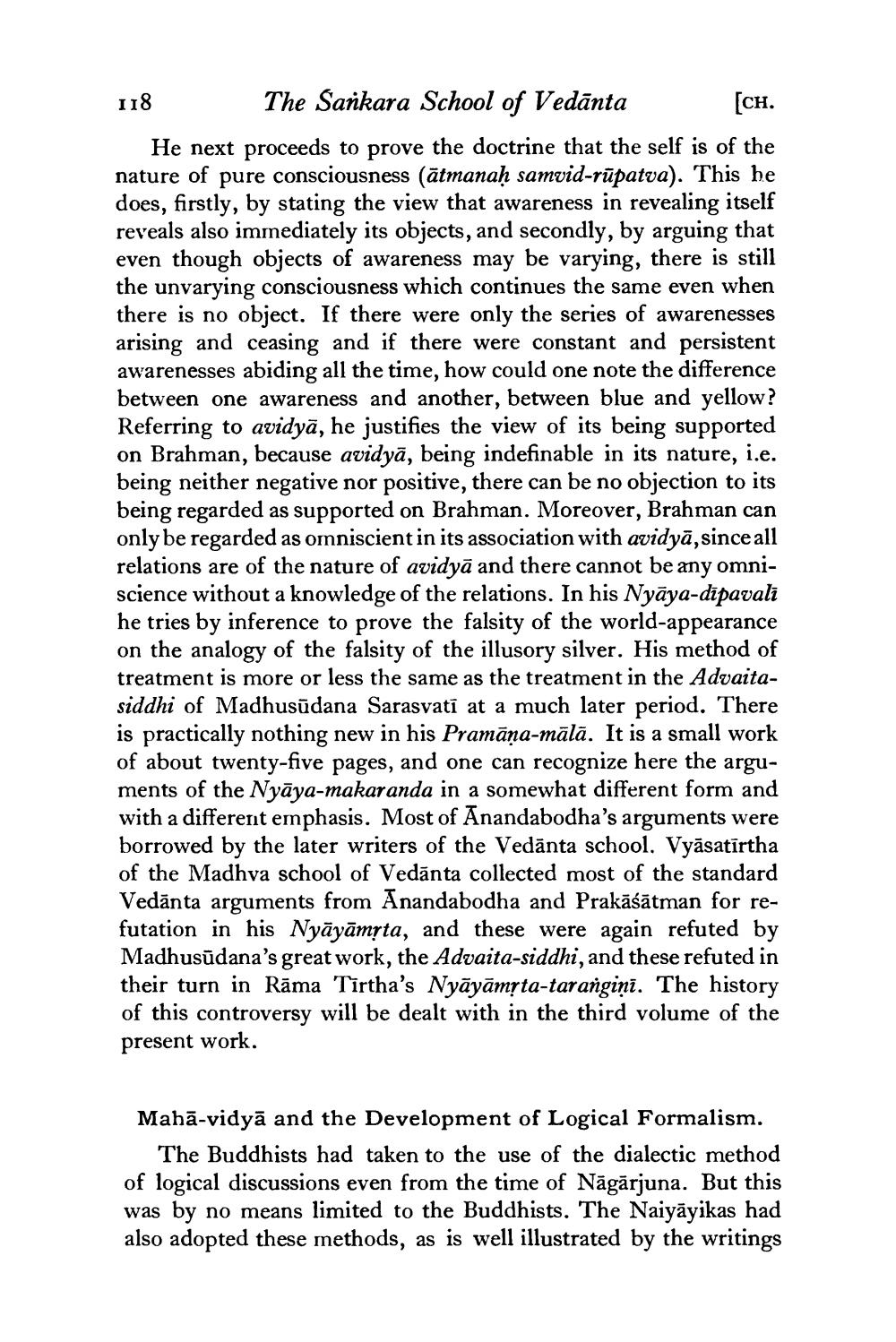________________
The Sankara School of Vedanta
[CH.
He next proceeds to prove the doctrine that the self is of the nature of pure consciousness (ätmanaḥ samvid-rūpatva). This he does, firstly, by stating the view that awareness in revealing itself reveals also immediately its objects, and secondly, by arguing that even though objects of awareness may be varying, there is still the unvarying consciousness which continues the same even when there is no object. If there were only the series of awarenesses arising and ceasing and if there were constant and persistent awarenesses abiding all the time, how could one note the difference between one awareness and another, between blue and yellow? Referring to avidyā, he justifies the view of its being supported on Brahman, because avidya, being indefinable in its nature, i.e. being neither negative nor positive, there can be no objection to its being regarded as supported on Brahman. Moreover, Brahman can only be regarded as omniscient in its association with avidya, since all relations are of the nature of avidyā and there cannot be any omniscience without a knowledge of the relations. In his Nyāya-dipavali he tries by inference to prove the falsity of the world-appearance on the analogy of the falsity of the illusory silver. His method of treatment is more or less the same as the treatment in the Advaitasiddhi of Madhusūdana Sarasvati at a much later period. There is practically nothing new in his Pramāṇa-mālā. It is a small work of about twenty-five pages, and one can recognize here the arguments of the Nyāya-makaranda in a somewhat different form and with a different emphasis. Most of Anandabodha's arguments were borrowed by the later writers of the Vedanta school. Vyasatīrtha of the Madhva school of Vedanta collected most of the standard Vedanta arguments from Anandabodha and Prakāśātman for refutation in his Nyāyāmṛta, and these were again refuted by Madhusudana's great work, the Advaita-siddhi, and these refuted in their turn in Rama Tirtha's Nyāyāmṛta-tarangini. The history of this controversy will be dealt with in the third volume of the present work.
118
Mahā-vidya and the Development of Logical Formalism.
The Buddhists had taken to the use of the dialectic method of logical discussions even from the time of Nagarjuna. But this was by no means limited to the Buddhists. The Naiyāyikas had also adopted these methods, as is well illustrated by the writings




